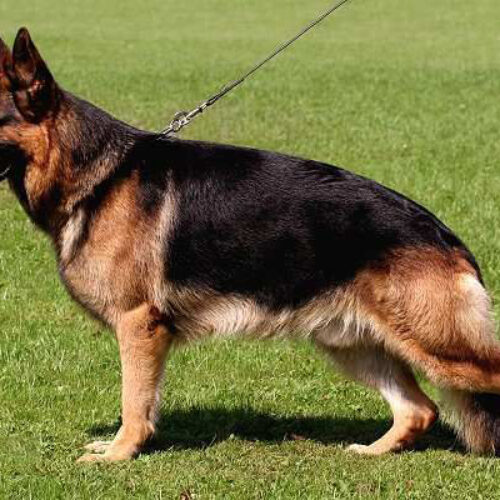Imagine your furry friend strutting proudly, tail wagging furiously, only to be met with concerned stares and hushed whispers. Could it be their unique, outward-facing paws? If so, you might be facing a common concern in certain dog breeds: carpus valgus, also known as east-west feet. But fear not, fellow dog lovers! Before you spiral into vet bills and orthopaedic nightmares, let’s delve into the world of carpus valgus, unpack its mysteries, and explore the options to keep your pup’s walk happy and healthy.
What is Carpus Valgus? Decoding the Wobbly Wrist
Picture the wrist joint in your dog’s front leg. In a healthy pup, the bones align straight down, supporting the paw directly below the leg. Carpus valgus, however, throws this alignment off-kilter. The metacarpal bones (paw bones) angle outwards, causing the paw to point east instead of straight ahead – hence the “east-west” nickname.
Breeds Predisposed to the Wonky Wobble: Who’s Most at Risk?
While any dog can technically develop carpus valgus, some breeds are predisposed due to their genetic makeup and shorter limbs. The most commonly affected by carpus valgus include:
- Chondrodystrophic breeds: Bulldogs, Shih Tzus, Lhasa Apsos, Dachshunds – their short legs often come with this quirky bone structure.
- Giant breeds: Great Danes, Mastiffs, Saint Bernards – their rapid growth rate can sometimes lead to misalignment.
- Sporting breeds: Labrador Retrievers, Golden Retrievers – their active lifestyles may put stress on the developing joints.
Signs & Symptoms: Spotting the Wobble Early
Early detection is key! Keep an eye out for these telltale signs of carpus valgus:
- Outward-facing paws: The most obvious clue, the paws deviate noticeably from the leg’s centerline.
- Uncoordinated gait: A wobbly wobble or bunny-hopping gait might indicate discomfort or instability.
- Lameness: In severe cases, pain may cause your dog to limp or avoid putting weight on the affected leg.
- Abnormal wear and tear: Look for uneven wear on paw pads or calluses on the outside of the wrist.

Don’t Panic! Tackling the Wobble with Wisdom
If you suspect carpus valgus, a trip to the vet is crucial. They’ll conduct a thorough examination, including X-rays, to confirm the diagnosis and evaluate the severity. The good news? Several treatment options can help your pup thrive:
- Supplements for Joints: Supplements with MCHC. (Microcristalline Hydroxylapatite) and Glycosaminoglycans (GAGs).
- Weight management: Maintaining a healthy weight reduces stress on the joints.
- Physical therapy: Exercises strengthen muscles and improve stability.
- Splinting or bracing: Temporary support can help correct alignment in young pups.
- Surgery: In rare cases, surgery may be recommended for severe misalignment.

Beyond Treatment: Living with East-West Feet
Remember, every dog is unique, and treatment plans vary. The most important thing is to manage the condition, not let it define your furry friend. With the right care and adjustments, carpus valgus needn’t hinder your dog’s zest for life! Explore ramps and harnesses to ease movement, prioritize soft surfaces, and most importantly, shower your pup with love and understanding.
So, chin up, dog lovers! With knowledge and proactive care, your east-west wobbler can continue to strut their stuff, unique gait and all, filling your days with the same wagging joy and unconditional love!
East-West Feet (Carpus Valgus)
The most likely or most common reason for a dog standing with its paws turned out (east-west) is because the radius slowed or stopped growing before the ulna did. One bone in the lower foreleg being a tiny bit shorter than it should have been is the reason for 99% of “easty-westy” stance.
In days gone by, when the fad was to try for fast growth rate & feed calcium-supplemented diets, we saw more nutrition-related problems in relative growth rates of ulna & radius. Still, I believe genetic causes are more common than nutritional (over-feeding, etc.) causes. Of course, it is perfectly natural & normal for the front feet toes to be very slightly turned out. Dogs will tend to decrease this small amount of turn-out as they increase speed.
If he stands east-west (turned out) some times, it is just because he has not decided on whether he intends to move straight ahead or turn one way or the other. The proof of correct structure is in the movement. It’s an old “trick” handlers use, setting the dog’s feet pointing straight, even though if the dog were to pose itself, they would turn out to some degree. Do his by twisting the elbow before allowing the dog to put his full weight on that foreleg. It is natural to turn SLIGHTLY outward when self-stacking.
When judging, tell the handler to walk the dog straight into a natural stance & only then allow him to adjust the feet (“when adjusted keep them straight.”). On the “down & back” exam, see what the dog does with the front feet as he approaches me. The dog should place his paws correctly (straight forward), then there is nothing to worry about there.
One way of diagnosing east-west feet is to lift the dogs front feet in the air as if they are hanging, if the feet are straight, then there is nothing to worry about but if the feet are east-west while in ear then the cause has to be identified & corrected.
Causes of East-West Feet:-
1. Improper growth rates between radius & ulna – Genetic
2. Narrow chest – Genetic
3. Over weight puppy (east-west feet is fairly common in heavy puppies which corrects itself after teething & after dropping of chest) – Environmental Factor
4. Rapid growth due to overfeeding of high protein diet – Environmental Factor
5. Rapid growth due to calcium supplementation – Environmental Factor
6. During teething – Environmental Factor





